Third time’s the charm, for mobile Intel?
August 29, 2008The UMPC (ultra-mobile PC) is dead, due to “unbridled feature creep” and associated price escalation. The mobile Internet device (MID) is stalled by iPhone mania and limited consumer pocket-space. The ultra-low cost netbook, however, is bringing “all the features mobile connected consumers want,” according to an interesting editorial. (more…)
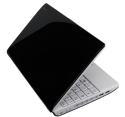 LG Electronics announced a netbook that sports a built-in HSPA (high speed packet access) modem, and may be available from carriers in subsidized form. The X110 has a 1.6GHz Atom processor, 10-inch screen, 80GB or 120GB hard drive, 802.11b/g, and a wired Ethernet port, says LG.
LG Electronics announced a netbook that sports a built-in HSPA (high speed packet access) modem, and may be available from carriers in subsidized form. The X110 has a 1.6GHz Atom processor, 10-inch screen, 80GB or 120GB hard drive, 802.11b/g, and a wired Ethernet port, says LG.  Wind River announced it will acquire a Korean developer of Linux mobile GUI stacks. The $16 million acquisition of privately-held Mizi Research will bring Wind River “world-class mobile expertise” and will “accelerate its mobile services presence in Asia Pacific,” says the company.
Wind River announced it will acquire a Korean developer of Linux mobile GUI stacks. The $16 million acquisition of privately-held Mizi Research will bring Wind River “world-class mobile expertise” and will “accelerate its mobile services presence in Asia Pacific,” says the company.  Minsk, Belarus-based product development firm Promwad has announced a design win for a Linux-based home-automation touchscreen panel. Promwad says it designed the “smart home multimedia control panel” in eight months, for a Swiss automation start-up called Incyma, using a Cirrus Logic EP9307 processor and Poky Linux.
Minsk, Belarus-based product development firm Promwad has announced a design win for a Linux-based home-automation touchscreen panel. Promwad says it designed the “smart home multimedia control panel” in eight months, for a Swiss automation start-up called Incyma, using a Cirrus Logic EP9307 processor and Poky Linux. 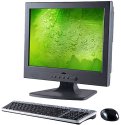 Tangent announced a fanless, Linux-compatible PC that runs on 24 Watts and tucks neatly behind its 17-inch display. The Evergreen 17 is available with a 1GHz Via Eden, 2GB SDRAM, and either a 160GB hard drive or a 64GB solid-state drive (SSD), says Tangent.
Tangent announced a fanless, Linux-compatible PC that runs on 24 Watts and tucks neatly behind its 17-inch display. The Evergreen 17 is available with a 1GHz Via Eden, 2GB SDRAM, and either a 160GB hard drive or a 64GB solid-state drive (SSD), says Tangent.  [Updated Nov. 26] — “Poky Linux,” Matchbox, and Clutter developer OpenedHand has been acquired by Intel Corp. The U.K.-based embedded Linux services team will join the Intel Open Source Technology Center, and will focus on Moblin development for mobile Internet devices and other mobile…
[Updated Nov. 26] — “Poky Linux,” Matchbox, and Clutter developer OpenedHand has been acquired by Intel Corp. The U.K.-based embedded Linux services team will join the Intel Open Source Technology Center, and will focus on Moblin development for mobile Internet devices and other mobile… 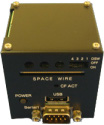 Japanese manufacturer Shimafuji is readying a two-inch cubed computer that runs Red Hat Linux on 1GB of flash. The Space Cube is equipped with a MIPS-based NEC VR5701 processor, 64MB RAM, and numerous I/O connections, including a Firewire-like “SpaceWire” port designed for spaceflight.
Japanese manufacturer Shimafuji is readying a two-inch cubed computer that runs Red Hat Linux on 1GB of flash. The Space Cube is equipped with a MIPS-based NEC VR5701 processor, 64MB RAM, and numerous I/O connections, including a Firewire-like “SpaceWire” port designed for spaceflight.  Shuttle Incorporated unveiled a “nettop” computer claimed to offer “almost fanless” operation and use just 38 Watts. The mini-ITX based “X27” includes an Intel Atom 230 processor, a gigabit Ethernet port, DVI video output, a 2.5-inch hard drive bay, and a PCI expansion slot, says Shuttle.
Shuttle Incorporated unveiled a “nettop” computer claimed to offer “almost fanless” operation and use just 38 Watts. The mini-ITX based “X27” includes an Intel Atom 230 processor, a gigabit Ethernet port, DVI video output, a 2.5-inch hard drive bay, and a PCI expansion slot, says Shuttle.  IBM's DeveloperWorks has published another tutorial by author Peter Seebach on developing for Linux-based Nokia Internet Tablets. The latest tutorial offers a command line program and related tips to ease the process of setting alarms on the Nokia N810 (pictured at left).
IBM's DeveloperWorks has published another tutorial by author Peter Seebach on developing for Linux-based Nokia Internet Tablets. The latest tutorial offers a command line program and related tips to ease the process of setting alarms on the Nokia N810 (pictured at left). 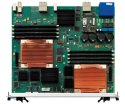 MontaVista is touting its Carrier Grade Linux (CGL) distribution's support for Cavium's Octeon architecture. Using the architecture-specific registration available in version 4.0 of the CGL spec, it has registered its Carrier Grade Edition (CGE) 5.0 Linux product as “CGL 4.0-compliant for the Cavium…
MontaVista is touting its Carrier Grade Linux (CGL) distribution's support for Cavium's Octeon architecture. Using the architecture-specific registration available in version 4.0 of the CGL spec, it has registered its Carrier Grade Edition (CGE) 5.0 Linux product as “CGL 4.0-compliant for the Cavium…  O'Reilly has updated its guide to Building Embedded Linux Systems by Karim Yaghmour. In the 462-page Second Edition, Yaghmour is joined by new co-authors Gilad Ben-Yossef and Jonathan Masters in updating this “in-depth, hard-core guide to putting together embedded systems based on Linux,” says O'Reilly.
O'Reilly has updated its guide to Building Embedded Linux Systems by Karim Yaghmour. In the 462-page Second Edition, Yaghmour is joined by new co-authors Gilad Ben-Yossef and Jonathan Masters in updating this “in-depth, hard-core guide to putting together embedded systems based on Linux,” says O'Reilly.  U.S. importation of smartphones and other devices using SiRF's GPS chipsets could be banned by December, if the U.S. International Trade Commission (ITC) adopts a recommendation made last week. Announced by Broadcom, the ruling is the latest development in a patent battle between the chipmakers.
U.S. importation of smartphones and other devices using SiRF's GPS chipsets could be banned by December, if the U.S. International Trade Commission (ITC) adopts a recommendation made last week. Announced by Broadcom, the ruling is the latest development in a patent battle between the chipmakers.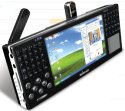 WiBrain has started shipping its B1LE and B1LH, two MIDs (mobile Internet devices) based on Ubuntu Linux and Via C7M processors. Additionally, the Korean company will soon unveil an Intel Atom-based “i1” MID (shown) that features built-in cellular networking based on HSDPA (high-speed downlink packet access).
WiBrain has started shipping its B1LE and B1LH, two MIDs (mobile Internet devices) based on Ubuntu Linux and Via C7M processors. Additionally, the Korean company will soon unveil an Intel Atom-based “i1” MID (shown) that features built-in cellular networking based on HSDPA (high-speed downlink packet access).  Orb Networks has joined a growing list of video broadcast service providers supporting Intel-based mobile Internet devices (MIDs). The Orb “MyCast” software and service lets users stream PC-based multimedia over local or wide-area networks to a variety of mobile devices, including Atom-based MIDs, Orb says.
Orb Networks has joined a growing list of video broadcast service providers supporting Intel-based mobile Internet devices (MIDs). The Orb “MyCast” software and service lets users stream PC-based multimedia over local or wide-area networks to a variety of mobile devices, including Atom-based MIDs, Orb says.